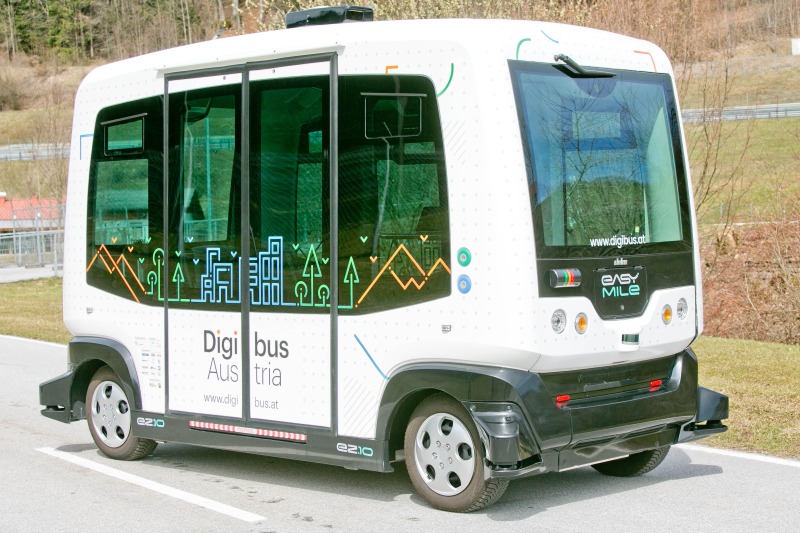Automated driving in local public transport
In the Austrian lead project "Digibus Austria", the AIT, as part of a high-level consortium around Salzburg Research, is researching and testing the reliable and safe operation of automated minibuses in local public transport. The aim is to further improve the independence and driving safety of autonomous vehicles. Test drives for research purposes are carried out in Salzburg and Lower Austria.
© Salzburg Research
In the future, self-driving minibuses could be used in local public transport as delivery vehicles to and from intermodal mobility hubs or to access local centres. Over the next three years, methods, technologies and models will be developed and tested for the reliable and safe operation of automated vehicles for local public transport as deliverers in a regional, intermodal mobility system in order to further improve the independence and driving safety of such vehicles.The results from the lead project "Digibus Austria" will form the basis for an Austrian reference model for real testing and operation of highly and fully automated vehicles in local public transport.
Research focus in the lead project
In "Digibus Austria" the following focal points for a reliable and safe operation of automated vehicles are researched:
- Road safety and roadworthiness: Which methods can be used to check the roadworthiness or road safety of a highly automated passenger shuttle and which driving scenarios can be handled by a highly automated shuttle in mixed traffic in a roadworthy and rule-compliant manner?
- Human Factors:
Which interaction concepts with other road users are suitable for regional driving scenarios of highly automated passenger shuttles and which insights can be gained with a driving simulator or by real tests?
Which methods for multimodal passenger interaction with a focus on speech- or video-based approaches are suitable for driverless operation and how can a similar or higher level of trust be built up in comparison to an operation with a driver? - New mobility services: Which concepts are suitable for the integration of highly or fully automated passenger shuttles into an intermodal, regional mobility system and how can these concepts be integrated into existing digital mobility services?
- Digital and physical infrastructure: Which methods can be used to analyse and evaluate the suitability or equipment of a driving environment or route for a highly or fully automated shuttle and how can the digital driving environment or lane including the necessary driving manoeuvres for a highly or fully automated vehicle be created (partially) automatically?
- Connectivity: Which technologies (LTE-V, ITS G5) are suitable for which connectivity requirements of highly or fully automated personal shuttles and how can the reliability of positioning or communication be improved?
- framework conditions: Which general conditions (technical, organisational, legal, social, economic) have to be taken into account for real-life tests and subsequently for the operation of highly or fully automated passenger shuttles in regional environments and how can these be mapped in a reference model?
The AIT experts will focus on the following research topics within the framework of the project
- Digitisation of the infrastructure and preparation in standardised formats for digital maps
- Development of risk models for the safety assessment of the driving environment and the need for infrastructure support
- Application of methods for impact analysis of automated traffic
Further information: https://www.digibus.at/




